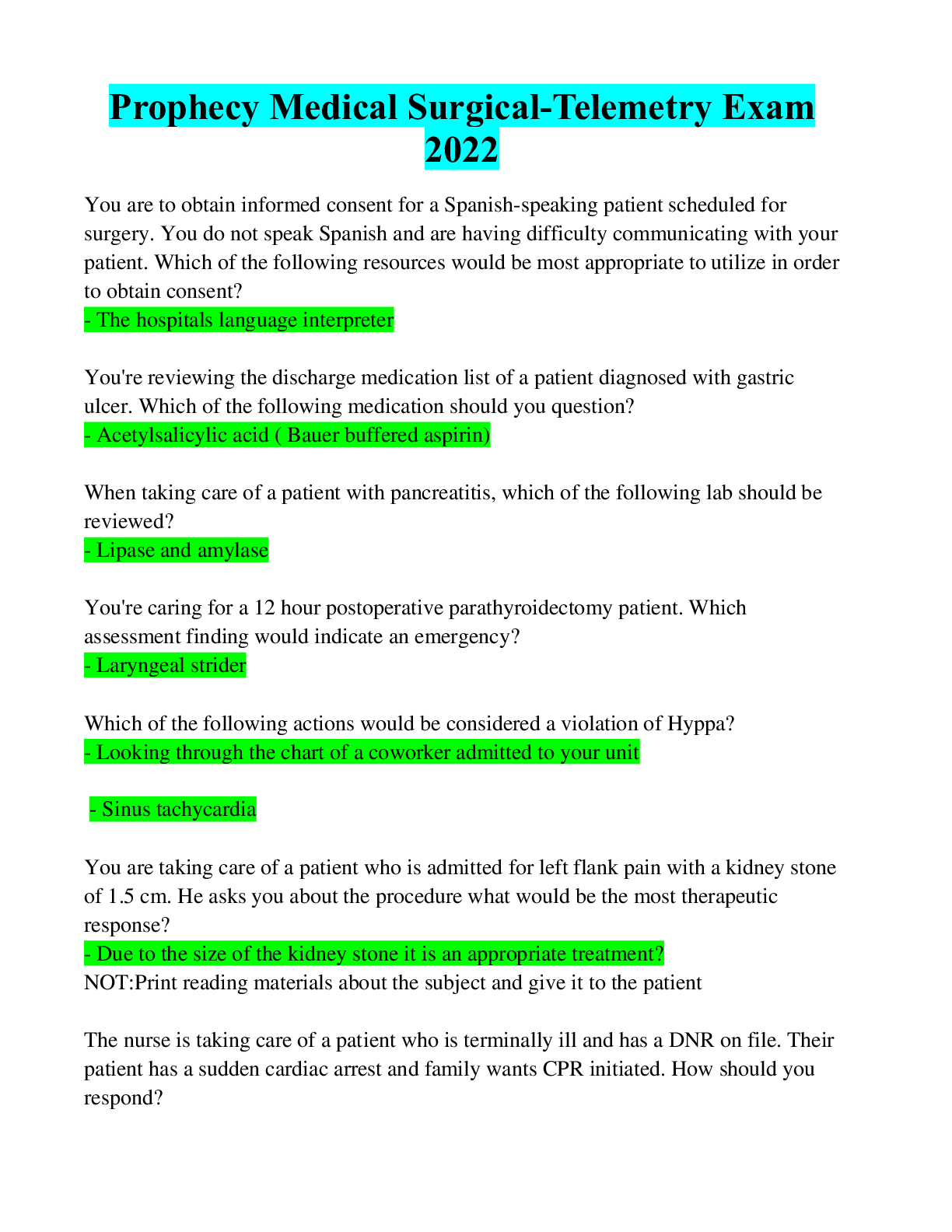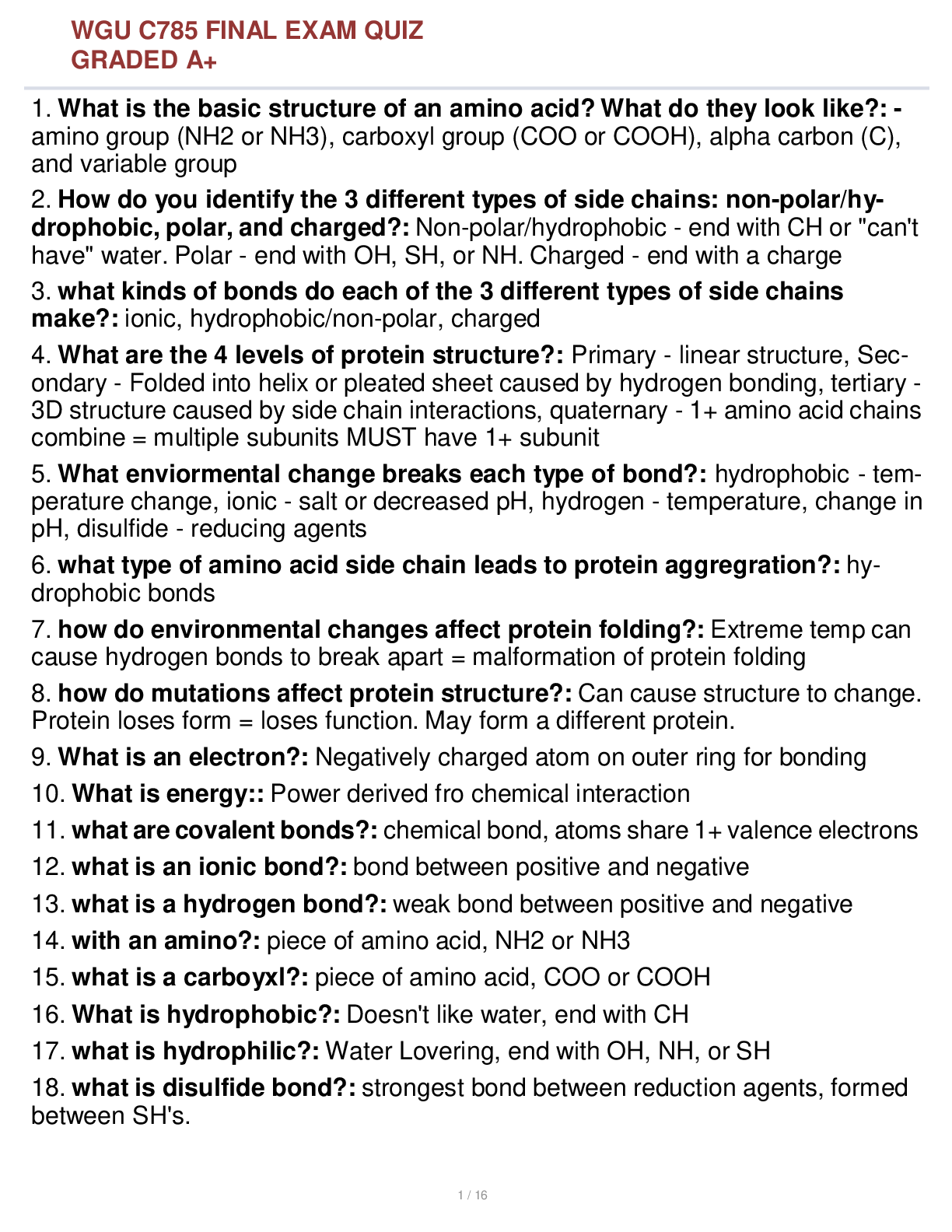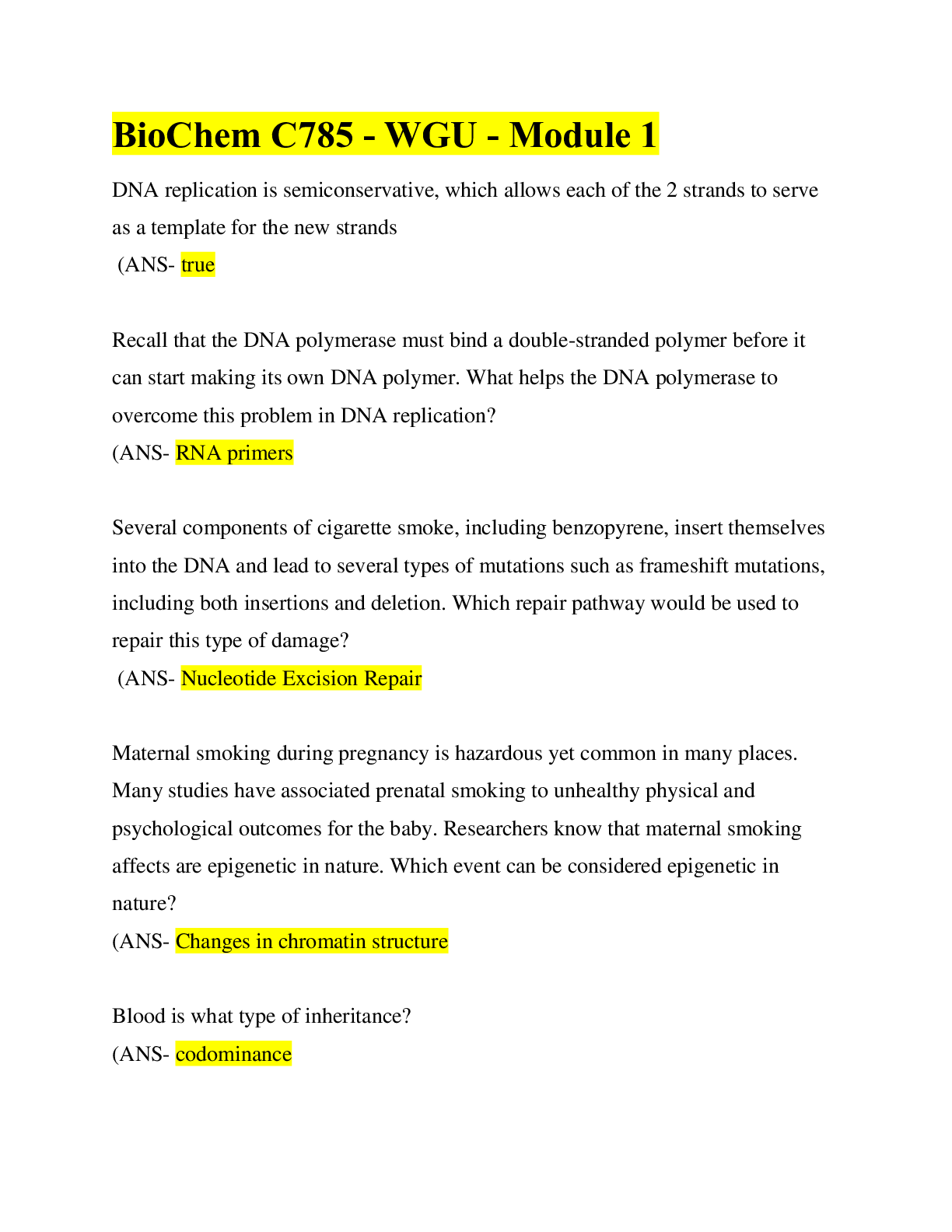*NURSING > STUDY GUIDE > patho final examination graded A+ (All)
patho final examination graded A+
Document Content and Description Below
Question 1 2 / 2 pts What period follows depolarization of the myocardium and represents a period during which no new cardiac potential can be propagated? Correct! Refractory Threshold Sinoatri... al (SA) Hyperpolarization During the refractory period, no new cardiac action potential can be initiated by a stimulus. This selection is the only option that accurately identifies the period described in the question. Question 2 2 / 2 pts What is the suggested mean blood pressure for an 8- to 9-year-old child? Correct! 106/58 mm Hg 104/55 mm Hg 112/62 mm Hg 121/70 mm Hg The suggested mean blood pressure for an 8- to 9- year-old child is 106/58 mm Hg. For a child of 6 to 7 years old, 104/55 mm Hg is appropriate; for a 12- to 13-year-old child, 112/62 mm Hg is appropriate, and for a 16- to 18-year-old young man, 121/70 mm Hg is appropriate. Question 3 2 / 2 pts Which is an example of an endogenous antigen? Yeast Correct! Cancer cells Fungus Bacteria Of the options provided, endogenous antigens include only those uniquely produced by cancerous cells. Question 4 2 / 2 pts An infant has a crescendo-decrescendo systolic ejection murmur located between the second and third intercostal spaces along the left sternal border. A wide fixed splitting of the second heart sound is also found. These clinical findings are consistent with which congenital heart defect? Atrioventricular canal (AVC) defect Patent ductus arteriosus (PDA) Ventricular septal defect (VSD) Correct! Atrial septal defect (ASD) Because most children with ASD are asymptomatic, diagnosis is usually made during a routine physical examination by the auscultation of a crescendo-decrescendo systolic ejection murmur that reflects increased blood flow through the pulmonary valve. The location of the murmur is between the second and third intercostal spaces along the left sternal border. A wide fixed splitting of the second heart sound is also characteristic of ASD, reflecting volume overload to the right ventricle and causing prolonged ejection time and a delay of pulmonic valve closure. The presentations of other congenital heart defects are not consistent with the described symptoms. Question 5 2 / 2 pts Chvostek and Trousseau signs indicate which electrolyte imbalance? Correct! Hypocalcemia Hypercalcemia Hyperkalemia Hypokalemia Two clinical signs of hypocalcemia are the Chvostek sign and Trousseau sign. These clinical signs are not indicative of any of the other options. Question 6 2 / 2 pts How does chest wall compliance in an infant differ from that of an adult? An adult’s chest wall compliance is the same as an infant’s. An adult’s chest wall compliance is dissimilar to that of an infant’s. Correct! An adult’s chest wall compliance is lower than an infant’s [Show More]
Last updated: 2 years ago
Preview 1 out of 47 pages

Buy this document to get the full access instantly
Instant Download Access after purchase
Buy NowInstant download
We Accept:

Reviews( 0 )
$11.00
Can't find what you want? Try our AI powered Search
Document information
Connected school, study & course
About the document
Uploaded On
May 31, 2021
Number of pages
47
Written in
Additional information
This document has been written for:
Uploaded
May 31, 2021
Downloads
0
Views
49








.png)

.png)


